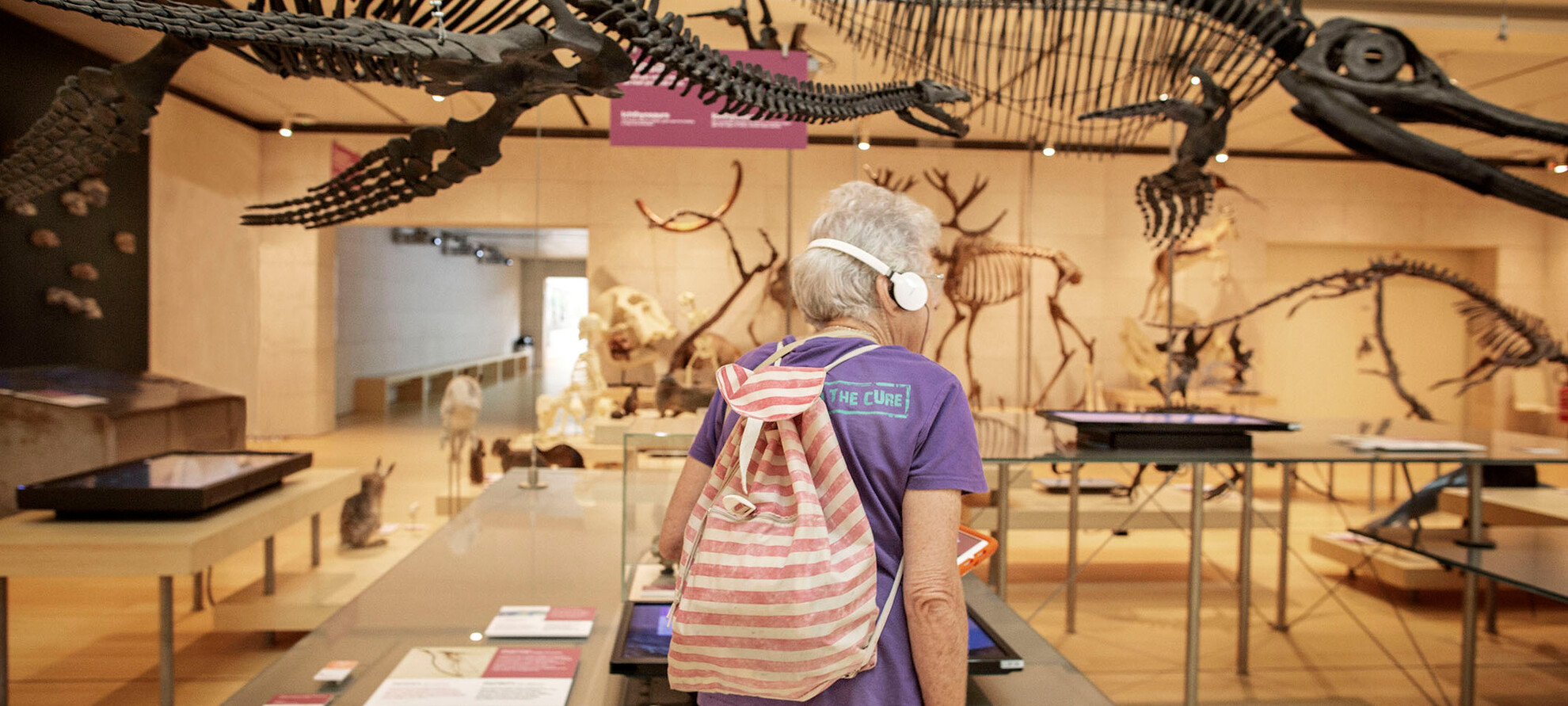What are the Dolomites made of?
A fascinating trail to discover our relationship with the countryside and the environment
What are the Dolomites made of? Well, it’s not just about the rocks. The geology of the Dolomites, a UNESCO World Heritage Site since 2009, tells the story of the Alps. Their whites and pale greys, their tones that shift with the colours of the sky, are made largely of the mineral dolomite. (Hence the name.)
That’s just a taster of all you can learn on our Cultural Trail for science and nature buffs. This is a journey among the exciting museums, age-old rocks and stilt villages of Trentino. A journey of discovery to explore a wealth of curious and interesting facts about the Alps, their glaciers, their flora and fauna, and the delicate balance between humans and our environment since prehistoric times.
We start from Trento, bound for a great museum (stages A and B)
The Science and Nature Cultural Trail begins in Trento – at one of Italy’s most important science museums, to be exact: the MUSE. Its spectacular design by starchitect Renzo Piano has made it a symbol of the city. The look is inspired by the silhouette of the mountains, creating evocative parallels between the museum and the natural environment all around.
Like the mountains, the museum must be explored vertically. Each floor features numerous finds to discover, with interactive installations and even a real tropical forest in the museum hothouse, with trees aplenty and a waterfall. Then there are the workshops, the guided tours, the Maxi Ooh! space for kids aged 0–5, and the temporary exhibitions that make every visit engaging and inspiring.
After perusing the MUSE, you’re ready for stage two, just a few miles from Trento, on Mount Bondone. Here, the Viote Alpine Botanical Garden has thousands of alpine plants and medicinal herbs, including some rare and endangered species. Away from the city lights, the Terrazza delle Stelle observatory is the perfect spot for contemplating the starry sky.
Then we stop off in Rovereto, for a helping of history and science (stages C and D)
Stage 3 brings us to Rovereto, where there are two interesting museums to explore. The Science and Archaeology museum in the old town centre will amaze you with its wealth of exhibits. Archaeology, zoology, botany, astronomy, earth sciences and robotics are just some of the topics to dive into.
Then the City Museum offers an interactive interdisciplinary experience as it tells the story of Rovereto, its beautiful surroundings, its fascinating history and the leading lights of the past who made it what it is today.
A stroll by the lake and in the heart of the mountains (stages E and F)
From elegant Rovereto, our trail takes us to the azure waters of Lake Ledro. This is one of the most intriguing places in Trentino, with its faithfully reconstructed Bronze Age stilt house village. Over 10,000 wooden stilts have been found on the banks of the lake since 1929, which once held up a prehistoric village that is now a UNESCO World Heritage Site. Alongside the archaeological site, the recently revamped Stilt House Museum displays a selection of the sophisticated hand-crafted goods made during the period.
The final leg of our journey through science and nature leads to the heart of the mountains – the Val di Fiemme and the Geological Museum of the Dolomites, in Predazzo. Founded in 1899, it is full of interesting collections with educational activities, workshops and ideas for geology-themed excursions. If you were wondering how the Dolomites were made, this is the place to find out!


